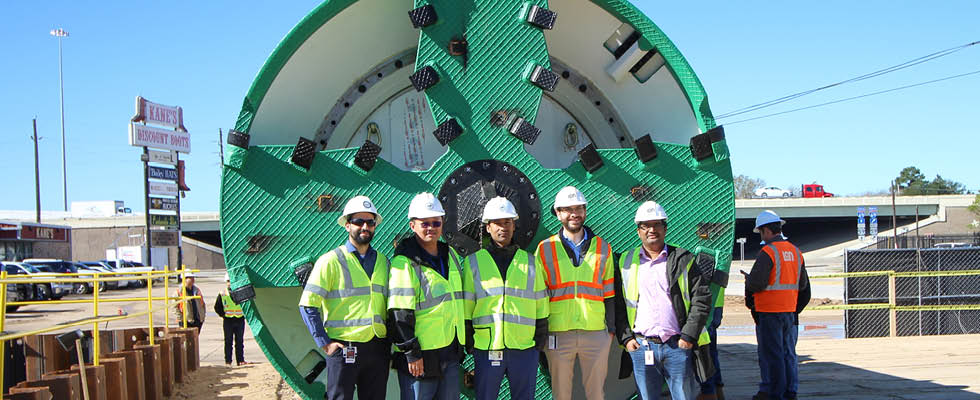
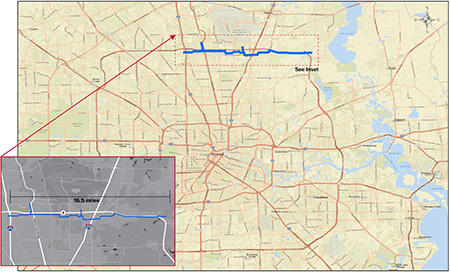
In just two years, 60% of the drinking water supply in the Houston, Texas, area—more than 500 million gallons per day (mgd)—will come from surface water. By 2034, the percentage is required to rise to 80%. The reason for this is to avert subsidence, which can be caused by excessive pumping of groundwater. Subsidence, which refers to the gradual sinking or settling of the ground, can increase flooding risks, impact water supplies and cause damage to infrastructure like roads, bridges, pipelines and buildings.
In 1975, the Texas state legislature created the Harris-Galveston Subsidence District (HGSD) to regulate groundwater withdrawal in Harris and Galveston counties to prevent subsidence. Since its inception, the HGSD has set targets for surface water usage in the region. By 2025, at least 60% of the drinking supply must come from surface water with an eventual goal of 80%. As a result, the counties in the region have been actively diversifying their water sources to include surface water from reservoirs, rivers and lakes.
The Northeast Transmission Line (NETL), a series of 13 construction packages under one program, is leading the way in this initiative. According to Panduranga Kuruva, PE, MBA, the managing engineer of the city of Houston’s Capital Projects, “Construction is almost complete, and the 16.5-mile pipeline will be in service by the end of this year. It will increase surface water usage and reduce ground subsidence in the Houston area. NETL is a collaborative effort involving the city of Houston and four Regional Water Authorities: North Harris County, Central Harris County, West Harris County and North Fort Bend. The NETL is a large-scale water infrastructure project designed to deliver 320 mgd of treated surface water to the northwest portion of the region. Its completion is expected to ensure a reliable drinking water supply for this fast-growing region well into the year 2050.”
The NETL project, which began in the planning stages in 2010, is a massive undertaking involving the construction of 16.5 miles of waterlines. The NETL will be an extension of the Northeast Water Purification Plant, a major Houston water treatment facility that draws water from nearby Lake Houston. The NETL is constructed from 120-inch/108-inch diameter steel pipe through 13 individual construction contracts. The interconnector lines that will feed the regional water authority sites range from 54 inches to 66 inches.
The design and construction of the NETL project has been a huge operation requiring the expertise of engineers, contractors, vendors and specialists. This soon-to-be-operational waterline stretches through a myriad of topographies: heavily wooded rural areas, densely populated neighborhoods, established commercial development and even under heavily trafficked interstate highways that transport thousands of people a day.
During the multiphase planning process, there were many intricate details and issues for the decision-makers and engineers to consider: routing, easements, haul routes, material availability, cost models, schedules and technical standards. It also involved:
- modeling scenarios for single and dual pipelines
- supply chain capabilities of up to 156-inch pipe and shipping challenges
- developing a cost model
- contract scheduling
- easement determination
- risk matrix
- energy cost present-worth analysis
- evaluating accessibility and haul routes
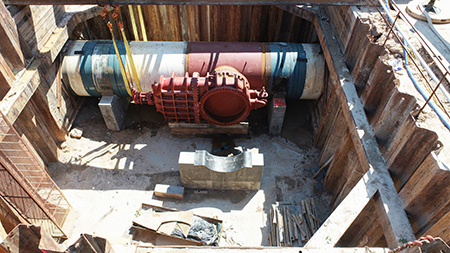
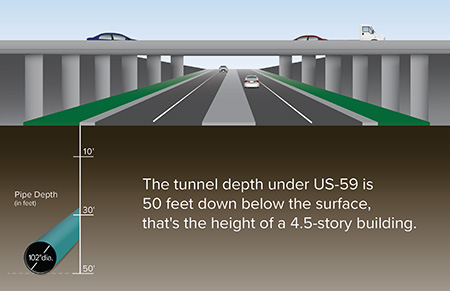
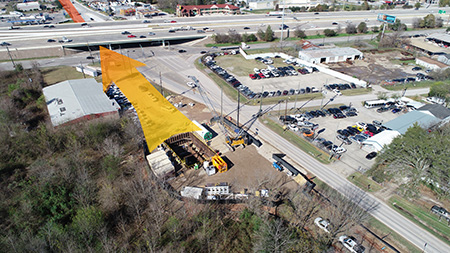
There have been unique challenges to installing this waterline. After the route selection, for example, the NETL project required more than 120 easements, in addition to the already existing easements. For the pipe installation, there were 3.25 miles of excavation for tunneling, aside from the crossings through 40 major roadways and waterways.
To ensure precision and efficiency in the workflow, the NETL project has been divided into three phases and 13 separate project segments. Ram Chakradhar, PE, the city’s supervising engineer says, “There are crossings we would consider ‘complicated.’ These complex locations included crossings under U.S. Route 59 (US-59), Interstate 45, Beltway 8 and the Hardy Toll Road. For example, we had to pass the 108-inch water line through a tunnel more than 1,000 feet long under US-59. This measure was designed to minimize the impact of construction on businesses, freeway and feeder road traffic, residents and schools. More than 192,000 cars travel on US-59 every day and another 18,000 travelers daily on the feeder road.”
Another significant 1,000-foot-long tunnel crossing was near a school and neighborhood. The underground tunneling was necessary to minimize impacts to residents and the campus. Kuruva adds, “You can imagine, with the pipeline traveling through areas where a lot of people live and work, there was active engagement with stakeholders, including environmental experts, landowners, regulatory authorities and community representatives. The city and the water authorities fostered transparency for the public to understand the need and development of the project.”
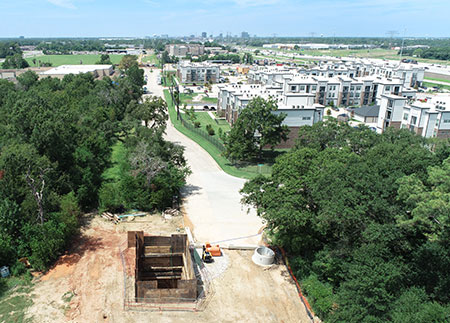
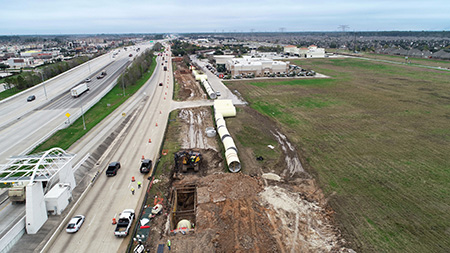
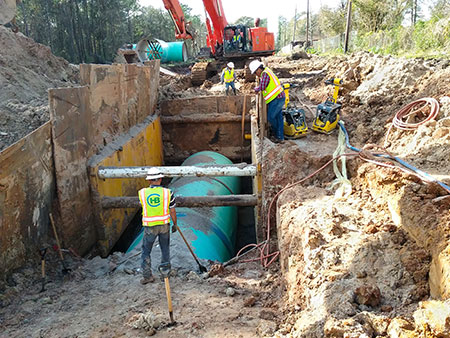
Kevin Tran, PE, the city’s team lead for capital projects, says the planning has been thorough and methodical throughout the process. “During the design phase, the city found out that a portion of the proposed 108-inch waterline segment was designed in the same alignment of a proposed major pipeline. The city and design team worked immediately with the third-party pipeline company to resolve the situation. With effective communication and coordination, we were able to secure a straight path alignment for the NETL, and the third-party pipeline was re-routed to a different location without delaying anyone’s schedule.”
To install the pipe, approximately 465,000 cubic yards of dirt were removed. That same amount could fill 145 Olympic-sized swimming pools. When the pipeline is completed, it will take 136 million gallons of water to test the system. That is the same amount of water it takes to supply half a million households for a day.

This project is instrumental in reducing the demand for groundwater and improving drinking water supply resiliency in the Houston area while mitigating the effects of subsidence on the region’s infrastructure and environment. The project is expected to be commissioned and operational by next year. The state, the city of Houston and the water authorities understand the importance of working together to address the critical subsidence issue to ensure a safe water supply for the future.
Diversifying water sources also reduces vulnerability to droughts and climate variations, ensuring a more reliable and responsive supply of drinking water. Additionally, surface water treatment technologies can enhance water quality, reduce energy consumption and promote a sustainable infrastructure. For Houston, that is resulting in a safer and more efficient long-term water supply.

